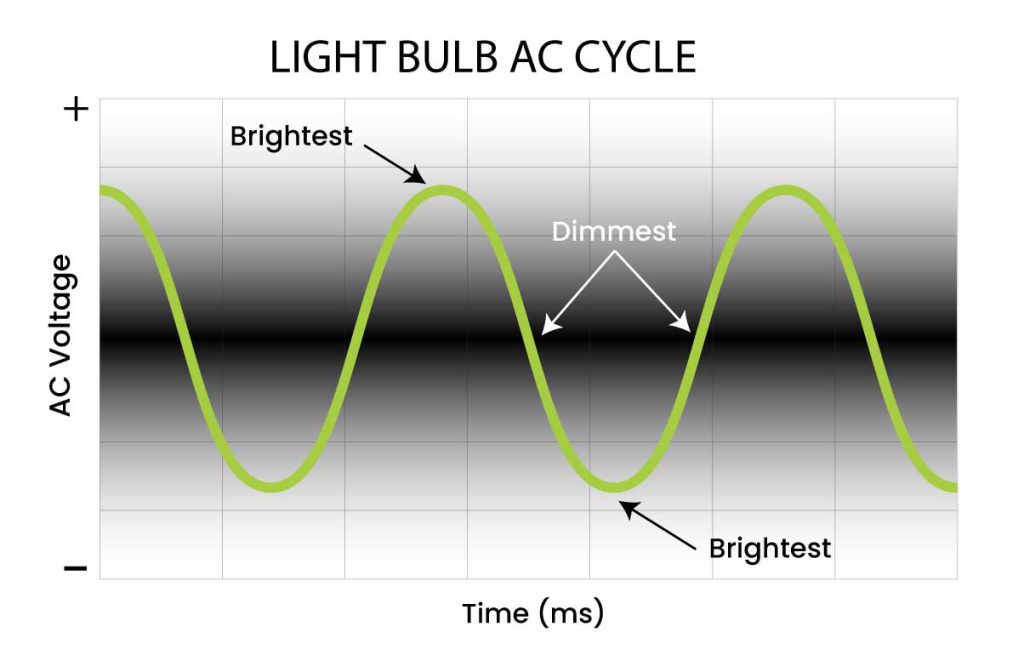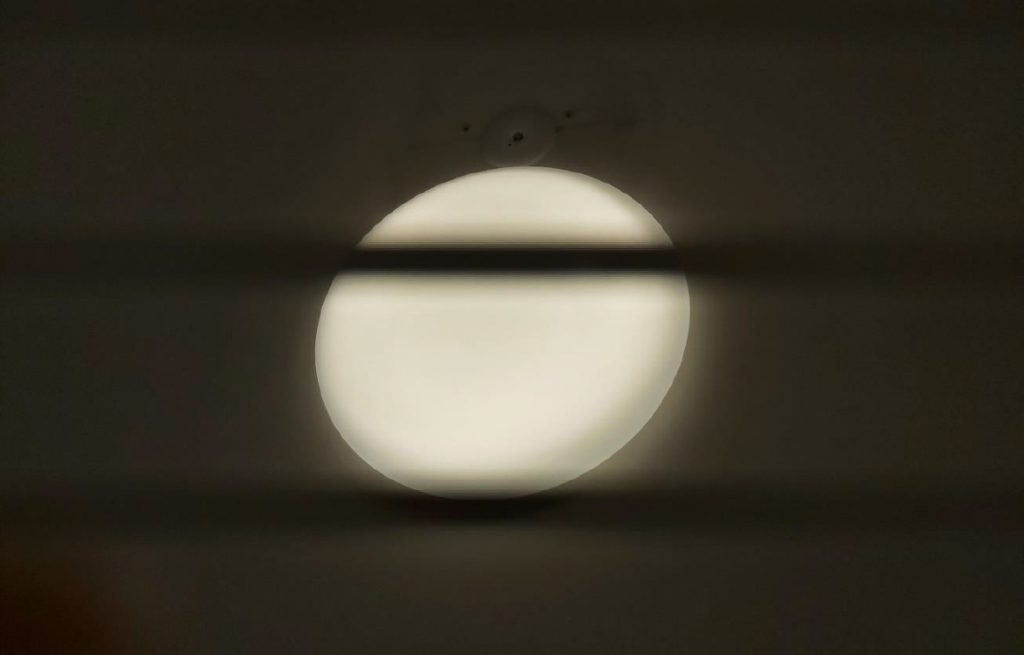Successful properties have lighting that suits the needs of their occupants. Proper lighting can boost productivity, mood and an overall sense of worker wellbeing. While bad lighting can do the opposite. Light flicker is detrimental to the workplace, often causing migraine headaches, eye strain and general eye discomfort in workers. Even worse, light flicker can often be a hidden danger, going unnoticed for months or years while negatively affecting occupants. Understanding and detecting light flicker ensures a healthy and safe working environment.
What is Light Flicker?
Light flicker is the repetitive and rapid changing of a light brightness over time. Such light repetitions are too fast for most humans to see but can still produce negative side effects in individuals with sensitivities, including headaches, nausea and eye strain.
Lights flicker because of their power source. Most facility light sources run on alternating current (AC) electricity. AC produces electrical cycles that fluctuate from positive to negative. Power starts at zero, grows to a maximum positive charge, then reverses itself to a maximum negative charge. These cycles are measured in hertz, and most power is delivered in 50 or 60 hertz.
Because most industrial and commercial lighting runs on AC current, their bulbs must also follow a similar alternating cycle. Illustration 1 shows the alternating waveform of a standard incandescent bulb. The bulb cycles through a maximum positive charge to a maximum negative charge. Essentially, the AC power supply is turning the incandescent bulb on and off.
However, as the bulb’s cycle moves from one maximum charge to another, it passes through a lower voltage. Therefore, the bulb goes from bright to dim to bright again. It’s these repetitions that cause light flicker.

We normally don’t notice light flicker because of the speed at which it occurs. Lights reach maximum brightness twice in each cycle, so at 60 hertz power, that’s 120 cycles or 120 times per second! At that speed, the light appears to be “on” all the time. This is why turning (slowing) down an incandescent bulb using a dimmer switch can produce a visible flicker.
Ways to Detect Light Flicker
To eliminate light flicker, first you must locate it. The easiest place to start is your “Suggestion Box” or tenant satisfaction survey. Are you getting complaints about the lighting? You may have a big problem, even if it’s only a small group of respondents. Remember: not everyone is susceptible to light flicker effects, so don’t let “only a few complaints” lull you into a false sense of security.
If you do suspect there’s a problem, go through and test suspected areas of your building. The easiest way to detect light flicker is to take a photo of a fast-moving object. Snap a photo with your smartphone of an object like a ruler (see Photo 1 below). If you can see discrete positions of the ruler (left), the lighting has a high light flicker. But, if the position blurs together (right), it has a low light flicker.

Another strategy for testing for light flicker is to use your smartphone’s camera app. Most people have at one time or another witnessed dark horizontal bars appear on their phone’s screen when they view light sources such as LED bulbs, computer monitors or TVs. These horizontal bars form because the camera’s video frame rate and/or screen refresh rate is high enough to capture the source’s dimming light cycles.
To test a bulb for flicker using your phone, take a photo of the light source, a “slow mo” video or simply hold the phone close to the source while viewing a live image. If there are horizontal bands of dark bars, there is light flicker (Photo 2).

Reducing the Effects of Light Flicker
You can combat light flicker with natural light. Since light flicker exists because of the fluctuation from bright to dim, you can use natural lighting, which has zero flicker, to fill in the gaps. While sunlight isn’t a substitute for quality bulbs and proper electrical system upkeep, it can be a good short-term solution. What’s more, natural lighting has other benefits to the physical and mental health of workers.
Fluorescent Bulbs
Early in their development, gas-filled linear fluorescent bulbs were notorious for producing light flicker in office buildings. Early models caused worker headaches and eye strain, but the later switch from magnetic to electronic ballasts eliminated the flicker along with the complaints.
Today, linear fluorescents and their small cousins the compact fluorescent bulb (CFL) enjoy widespread use. However, fluorescent lights can still produce light flicker for a variety of reasons.
Like any bulb, these gas-filled illuminators work less effectively with age. And, unlike incandescents, they don’t suffer catastrophic failure. That is, fluorescents won’t simply go out. Instead, they will continue to work even if only way. That means flickering side effects could go on for some time. So keep fluorescent bulbs fresh. If replacements are still flickering, you may have a bad ballast, especially if you hear a hum.
LED Bulbs
LED bulbs are the growing trend in facility illumination because they’re more efficient than incandescents and fluorescents. LEDs also extend bulb life, with a run time of around 20K to 100K hours.
Instead of tungsten filaments and gas vapor, LEDs use electronics (light emitting diodes) to produce light. Because of this, they tend to have a harsher AC flicker wave profile than other bulb types. So, bulb designers attach electrical components in the LED bulb’s base to reduce flicker.
However, when it comes to light flicker and LEDs, it’s a buyer beware situation. You usually get what you pay for. Some LEDs have almost no flicker, while others have an abundance. It all depends on the quality of their electronics. Perform your own flicker detection tests before you decide.
Sources:
“Lighting Ergonomics – Lighting Flicker.” Canadian Center for Occupational Health and Safety. Accessed 4 February 2022. Updated 2022-02-03.
Mander, Susan. “Key Lighting Principles for Facilities Managers.” Presented 15 June 2021. Online presentation for Facilities Managers Association of New Zealand.

